A version of this article originally appeared in 2 Million Blossoms quarterly
Autumn in New England: crisp mornings, apple cider, and county fairs. Thriving in the background of this scene—overlooked, but ubiquitous—are goldenrods, their luminous yellow spires brightening tired roadways, fields, and woodlands.
Goldenrods (Solidago, Euthamia, and Oligoneuron spp.) are a group of 100+ species of asters native to North America. All are pollinator powerhouses. They bloom in succession from June through October, providing sustenance and shelter for pollinating insects long after the flower-laden days of summer have passed.
Yet, goldenrod gets a bad rep, mainly because of two pervasive beliefs. First, that goldenrods cause hay fever and second, that goldenrods are hard to control in the garden. The first is a myth–goldenrods don’t cause allergies–and the second fails to recognize that while some goldenrods are unkempt, most are well behaved. In both cases, disdain is unwarranted, so I’m here to make the case that goldenrods deserve a place in your garden.
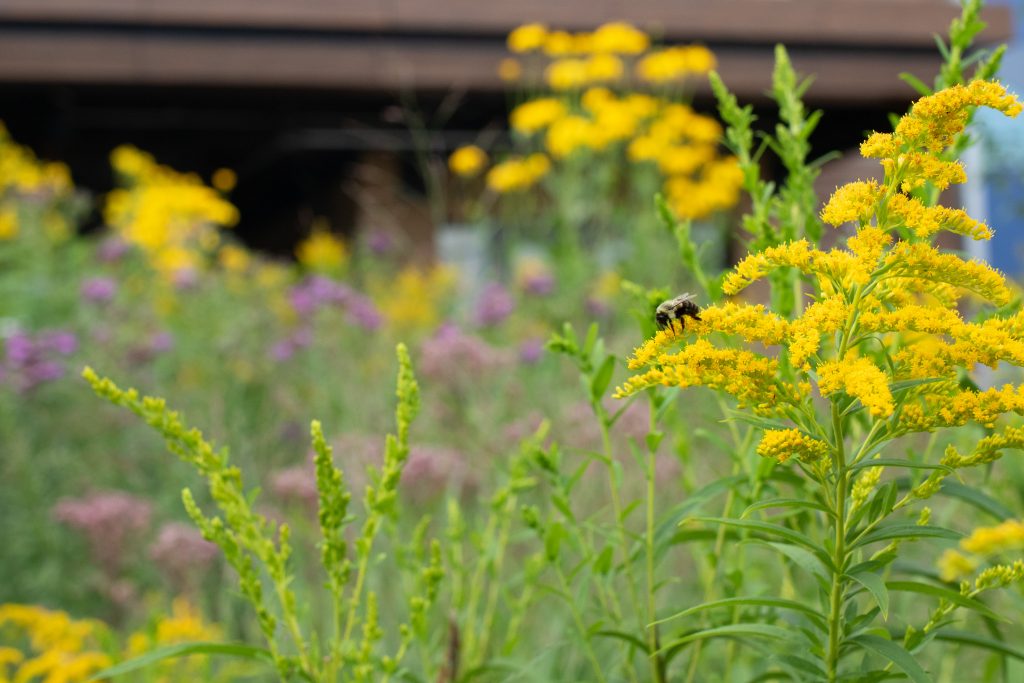
Goldenrods are beautiful and ecologically important additions to any garden.
A case of mistaken identity
Goldenrods can’t make you sneeze. They are animal-pollinated, meaning their pollen is can carried by insects, not the wind. The real culprit of hay fever is ragweed pollen, which is dry and easily picked up by a breeze, tickling our sinuses and making us sneeze. The two plants grow in similar open habitats and flower in fall, but ragweed produces green, nectarless flowers, which are never attractive to insects.
Although goldenrods also get a bad reputation for being unruly, only some species are unfit for gardens. Canada goldenrod (Solidago candensis), giant goldenrod (Solidago altissima), and grass-leaved goldenrod (Euthamia graminifolia) are indeed quick to colonize open areas and, once established, sprawl unchecked via wind-dispersed seeds and underground rhizomes. These species should be avoided in backyard gardens, but are suitable for large meadow plantings, rain gardens, or roadside restorations.
Goldenrods for your garden
For every goldenrod species that’s weedy, however, there’s at least one that’s tidy. Take blue-stemmed goldenrod (Solidago caesia) and zig-zag goldenrod (Solidago flexicaullis) that spread slowly in shade and partial sun. Or showy goldenrod (Solidago speciosa) and stiff goldenrod (Oligoneruon rigida) that form elegant clumps in well-draining soil. Planting along a salted roadway? Look no further than seaside goldenrod (Solidago sempervirens) which is tolerant of salt since it naturally grows along coastlines. And if you already have too many yellow flowers in your fall garden, add contrast with the cream-white blooms of silverrod (Solidago bicolor).
Many goldenrod cultivars have tidy growth habits, too, but not all provide high quality resources for pollinators. One cultivar that does is wrinkleleaf goldenrod ‘Fireworks.’ Pollinators love it and, true to its name, it adds a pop of color, texture and intrigue to any planting.
To help you select the perfect species for your planting, I’ve collated a list of goldenrod species native to the eastern US that are also available in the horticulture trade.
Insect Magnet
By planting goldenrods, you support late-season insect pollinators—bees, beetles, butterflies, moths, and wasps—that depend on it. Goldenrods feed many specialist bees, like hairy-banded mining bees (Andrena hirticincta) and spine-shouldered cellophane bees (Colletes simulans), that use goldenrod pollen to complete their life cycles. Queen bumble bees and honey bees, too, feed on goldenrod nectar to build up fat reserves before winter.
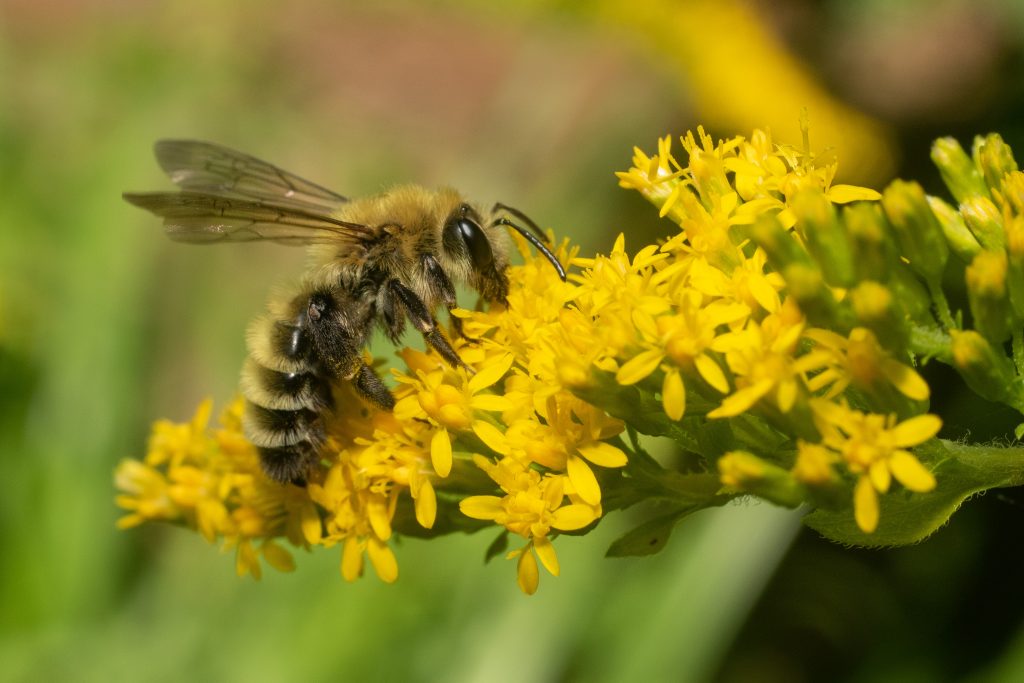
Hairy-banded mining bees (Andrena hirticincta) are common visitors to goldenrod flowers. By planting goldenrod you help these specialist bees complete their life cycles.
Beetles also find meals on goldenrod. Locust borers consume the protein-rich pollen whereas goldenrod soldier beetles snack on aphids. Blister beetles drink nectar, but also deposit eggs on the flowers. Once hatched, blister beetle larvae catch a ride on a solitary bee back to her nest. There, they disembark, kill the bee offspring, and develop on the pollen provisions.
Goldenrods support more butterflies and moths than any other perennial forb: 115 species of Lepidoptera eat goldenrod leaves and shoots. Countless flies, grasshoppers, thrips, and true bugs (e.g. aphids and stink bugs) devour goldenrod as well, meaning individual plants teem with insect life.
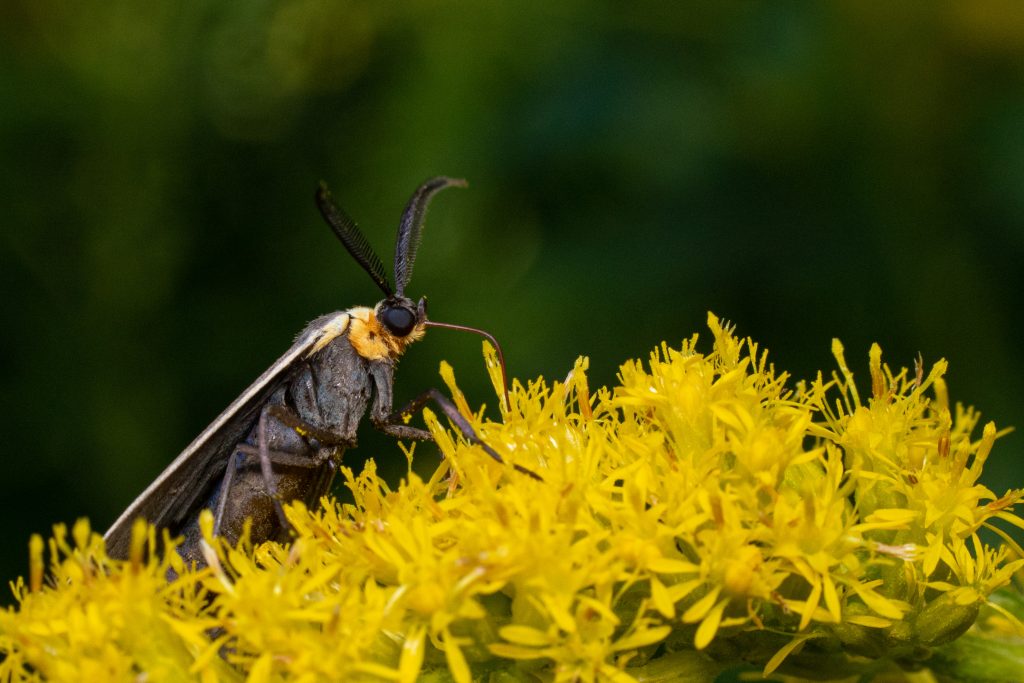
Yellow-collared scape moths (Cisseps fulvicollis) can often be seen nectaring on goldenrod flowers.
This menu of tasty insects attracts wasps. Predatory wasps, like paper wasps and potter wasps, hunt vulnerable, soft-bodied insects on goldenrod. While planning their next attack, they refuel on nectar and rest on stems. (Don’t worry, these solitary wasps are harmless to people!)
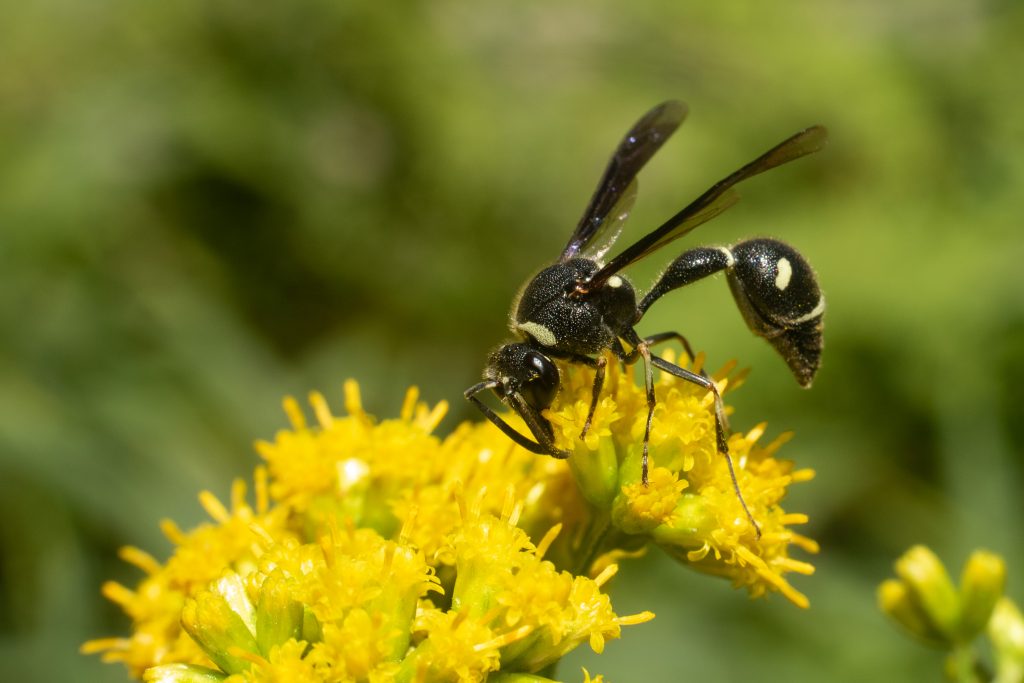
Fraternal potter wasps (Eumenes fraternus) may look fierce, but they are harmless to people. These wasps are common visitors to goldenrods where they feed on nectar and hunt for soft-bodied insects to bring back to the nest.
Parasitic wasps take advantage of this abundance of prey in a different way. They lay eggs, and their larvae subsequently develop, in the homes of other insects. Some parasitic wasps lay eggs in goldenrod galls, which are swollen stems containing a fly larva. Others only use goldenrods for nectar and deposit their eggs into the nearby nests of solitary bees.
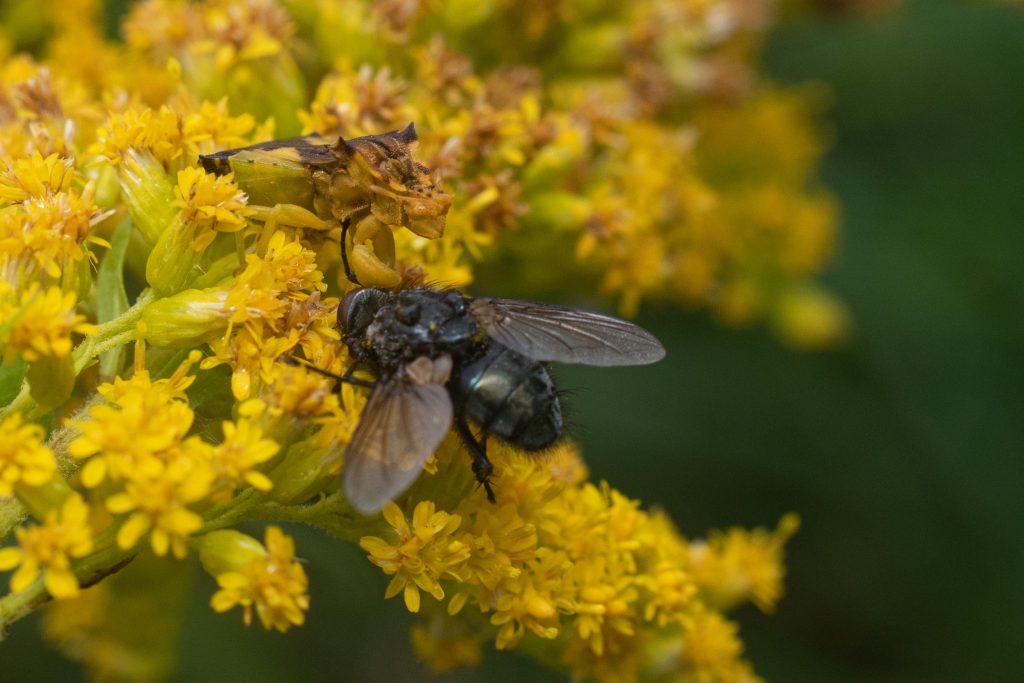
Other animals, too, are drawn to goldenrod. Ambush bugs, for example, make a tasty snacks of nectaring insects.
Importantly, patches of goldenrod provide relief for insects on the move. Adult monarch and painted lady butterflies rely on goldenrod nectar during their annual migrations. Occasionally, they’ll spend cool nights hanging from the undersides of the leaves. As such, goldenrod is likely vital to the existence of these impressive migrations.
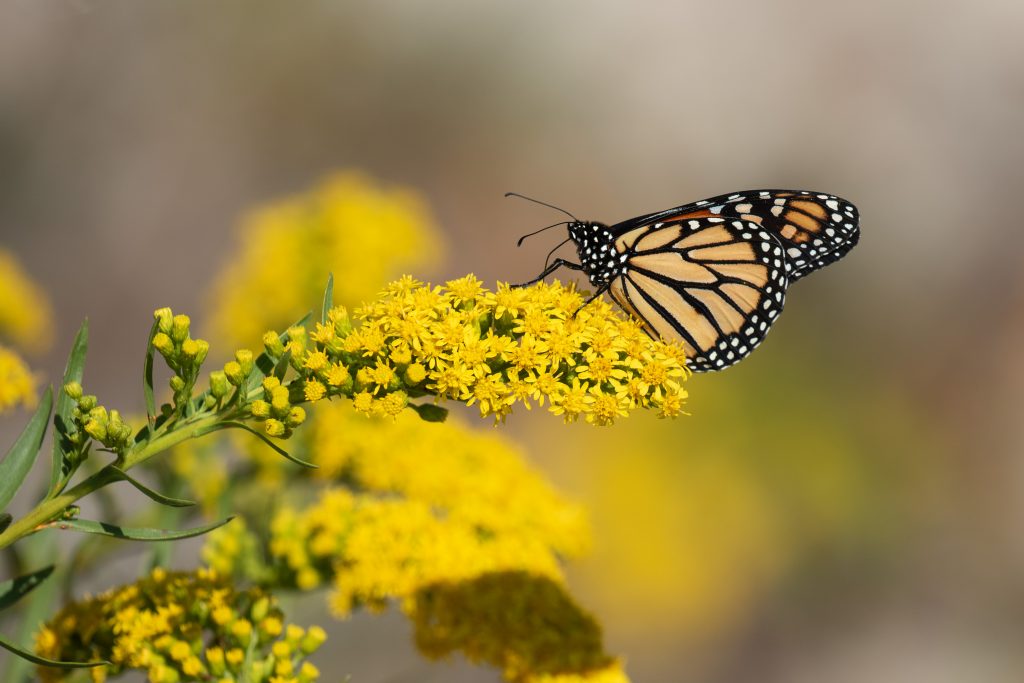
Seaside goldenrod provides important fuel for monarch butterflies on their journey south to Mexico each fall.
It is time to give goldenrods a place in the garden. Trust me, goldenrod will quickly become a mainstay in your fall garden, its luminous flowers revealing a whole hidden world of insects right in your backyard. You’ll wonder why you hadn’t planted it earlier, and the pollinators will thank you, which is certainly nothing to sneeze at.


